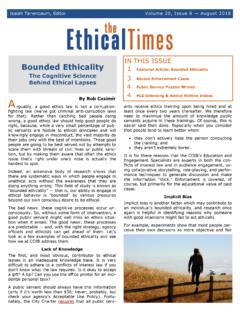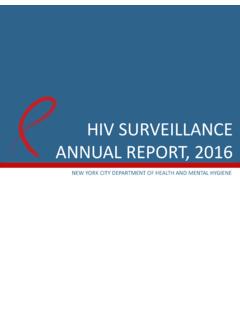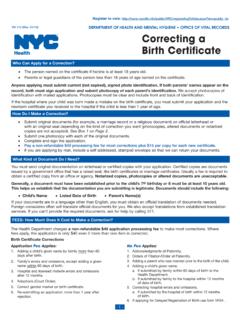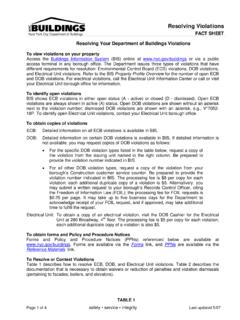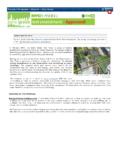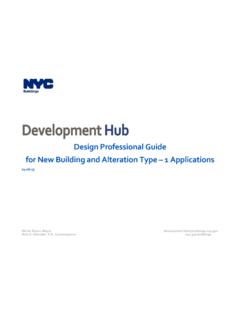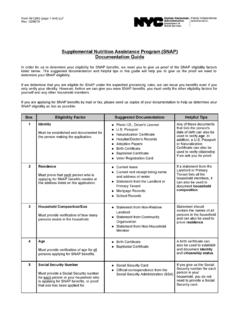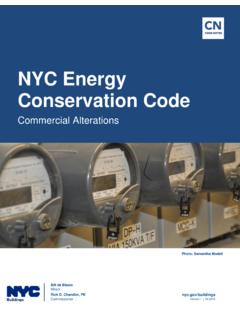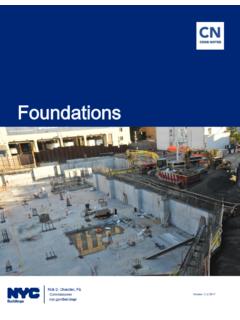Transcription of Climate Resiliency Design Guidelines
1 NYC Mayor s Office of Resiliency Climate Resiliency Design Guidelines - Version Resiliency Design GuidelinesSeptember 2020 Version photo by Jean Schwarzwalder, New York City Department of Environmental Mayor s Office of Resiliency Climate Resiliency Design Guidelines - Version page intentionally left blankNYC Mayor s Office of Resiliency Climate Resiliency Design Guidelines - Version Introduction ..5A. Climate Change in New York City ..6B. Useful Life of Capital Projects.
2 7C. Defining Criticality and Major Projects ..8D. Managing Uncertainty ..9E. Project-specific Considerations ..10F. Reporting Requirements ..10II. Resilient Design ..11A. Increasing Heat ..11B. Increasing Precipitation ..19C. Sea Level Rise ..22 III. Toolkit ..31A. Resilient Design Process ..31B. Exposure Screening Tool ..32C. Risk Assessment Methodology ..34D. Benefit-cost Analysis Methodology ..36 Appendices ..431. Key Terms ..452. Climate Change Projections ..493. Differentiation of Flood Maps.
3 514. Design Strategies Checklist ..535. Project Benefit Categories ..556. Resilient Design Submittal Checklist ..65 Works Cited ..69 ContentsNYC Mayor s Office of Resiliency Climate Resiliency Design Guidelines - Version & CONFIDENTIAL this page intentionally left blankNYC Mayor s Office of Resiliency Climate Resiliency Design Guidelines - Version Introduction1 Though the intensity and frequency of storms is expected to increase, firm projections on future wind conditions have not yet been developed.
4 NYC s undertaking a study to assess projected changes to extreme wind hazards and identify risks to the city s built IntroductionThe Guidelines provide step-by-step instructions on how to supplement historic Climate data with specific, regional, forward-looking Climate change data in the Design of City facilities. Figure 1 - Both historic weather data and Climate change projections inform the Design of capital projects in York City (NYC) faces challenges resulting from a rapidly changing Climate . Many capital projects, including infrastructure, landscapes, and buildings ( facilities ), will experience flooding, precipitation, and heat Over the 21st century, the intensity and severity of these events will increase.
5 Further, increasing global average annual temperatures will exacerbate sea level rise. With 520 miles of coastline across its five boroughs, several low-lying locations across the City will experience monthly tidal inundation that results from higher seas. The Climate Resiliency Design Guidelines ( the Guidelines ) provide step-by-step instructions to go beyond building code and standards, which are informed with historic Climate data, by also looking to specific, forward-looking Climate data for use in the Design of City facilities.
6 Resilient Design must become an integral part of the project planning process for City agencies and designers. All new projects and substantial improvements will assess risks to Climate hazards in the context of the project s purpose, asset type, site location, and funding, and then determine the appropriate resilient Design strategies using the Guidelines . The Guidelines apply to all City capital projects (defined in accordance with Chapter 9 Section 210 of the NYC Charter, see Appendix 1 - Key Terms) except coastal protection projects ( sea walls, bulkheads, and levees), for which the City is developing separate guidance.
7 Implementing the Guidelines will result in more resilient City facilities that will protect the City s public investments into the primary goal of the Guidelines is to incorporate forward-looking Climate change data in the Design of City capital projects. Codes and standards that regulate the Design of facilities already incorporate historic weather data to determine how to Design for today s conditions. However, historic data does not accurately represent the projected severity and frequency of future storms, sea level rise, heat waves, and precipitation.
8 The Climate is already changing and will continue to change in significant ways over the full useful life of facilities designed today, threatening to undermine capital investments and impede critical services if they are not designed for future conditions. Future versions of the Guidelines will explore additional Climate stressors as science evolves in coordination with the New York City Panel on Climate Change (NPCC). The Guidelines complement the use of historic data in existing codes and standards by providing a consistent methodology for engineers, architects, landscape architects, and planners to Design facilities that are resilient to changing Climate conditions (see Figure 1).
9 The Guidelines are to be used throughout the Design process during project scoping and planning initiation, as a reference in requests for proposals (RFPs), during the preliminary Design or study phase, through to final Design for all new construction and substantial improvements of City facilities. A successful resilient Design is one that meets these Guidelines , provides co-beneficial outcomes, reduces costs over the life of the asset wherever possible, and avoids negative Historic weather dataNPCC Climate change projectionsClimate Resiliency Design GuidelinesBuilding code and Design standardsDesign of NYC capital projectsNYC Mayor s Office of Resiliency Climate Resiliency Design Guidelines - Version impacts to other systems.
10 Resilient Design does not always add cost and can be incorporated into standard project delivery frameworks. Resilient Design should not exist in a silo, but rather be a well-integrated part of existing processes and address other goals of the City. For example, resilient Design choices should be made as an integral part of the City s project planning, risk management, and financial planning. Similarly, resilient Design choices should be selected to maximize the efficacy and efficiency of investments. Some ways this can be done include: 1) integrating soft Resiliency strategies (such as green infrastructure), hard Resiliency strategies (built or intensive investments), and operational Resiliency strategies; 2) addressing multiple Climate hazards with single interventions; and 3) reducing Climate change risk in concert with other goals ( , energy efficiency or reduction in greenhouse gas emissions).
